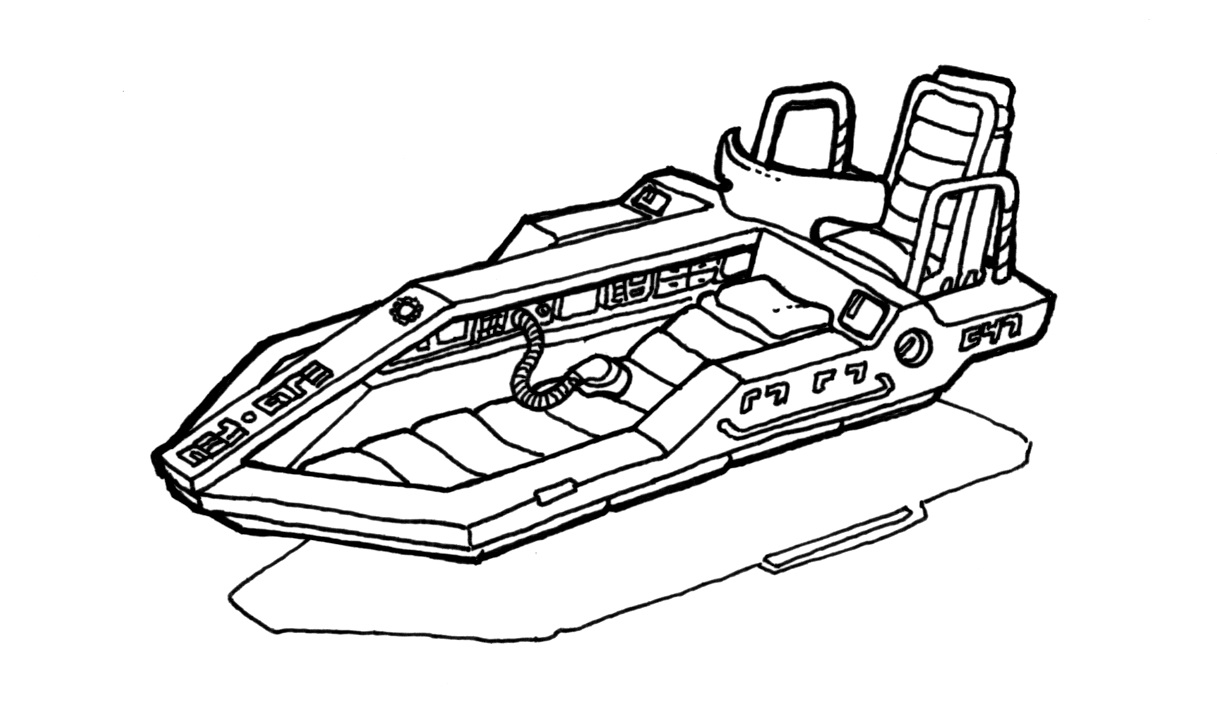Knight SPR Grav Sled
This article originally appeared in the March/April 2020 issue.
| Technology Level | 13 |
| Skill | Drive (Grav) |
| Agility | -1 |
| Speed (Cruise) | Slow (Very Slow) |
| Range (Cruise) | 80 (140) |
| Crew | 1 (unless operated by autopilot) |
| Passengers | 2* |
| Cargo | .2 tons (medical supplies) |
| Hull | 2 |
| Armour: Front | 3 |
| Armour: Sides | 3 |
| Armour: Rear | 3 |
| Shipping | 1 ton |
| Cost | Cr 106,000 |
| Equipment and Traits | Open-topped vehicle Short-term life support (plastic foil bubble) Communications (TL8) Navigation (Basic) Sensors (Improved) Autopilot (3) Computer/3 (Intellect-1, Medic-1, Life Science-1, Chemistry-1, Drive/grav-1, Database) Medical scanner Extensive TL12 medikit (+2 to Medic checks performed for first aid);Biomonitor (+2 to Medic checks to keep a patient alive) |
Ling-Standard’s Knight series of rescue sleds is one of the standard vehicles used in rescue. It has limited grav flight (capped at 100m altitude for safety reasons) and can carry two patients on couches which can be detached and operate as (unmotorized, hand-pushed) floating stretchers. When the couches are attached, the patients are monitored by the sled’s medical expert system, which can administer first aid using several robotic arms folding out of the vehicle’s central spar. Pulmonary aids, defibrillators, tracheal tubes and IV feeds can be employed by a paramedic to keep the patient alive. Those can be constantly monitored by the expert system once they are in place, although the computer is not authorised to administer them by itself.
The sled is driven from an open seat mounted in the back of the vehicle. A second and third crewman can cling to the handrails and ride the vehicle for short distances. The whole driver’s seat and control assembly is mounted on a rotating ring and can be swiveled around if the sled is moving in reverse.
With its narrow profile (between 1.5m and 2m in width), the Knight SPR (“Sled, Paramedic Rescue”) can navigate starport corridors and even the passageways of larger starships. It is able to move in any direction, including sideways, to facilitate movement in relatively tight spaces, and can pivot around its own center in any space of 3m to 3.5m diameter. Turning corners can be a problem in cramped quarters, though, and there have been unconfirmed reports of the grav drive interacting unpredictably with the grav plating in low-technology ships.
There are few variants of the basic SPR model. One common variant has one of the patient couches removed and the other upgraded to a portable cryoberth.

 Freelance
Traveller
Freelance
Traveller